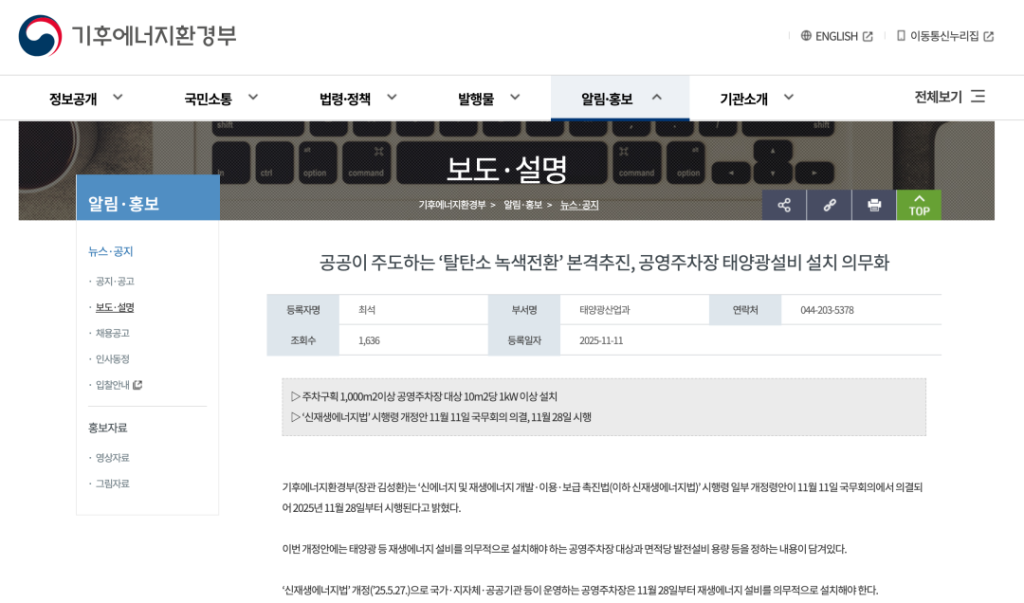Recently, South Korea’s Ministry of Climate, Energy, and Environment officially finalized a new renewable energy deployment requirement: Starting November 28, 2025, all public parking lots with an area exceeding 1,000 m² must install a renewable energy generation system with a minimum capacity of 100 kW, primarily referring to solar photovoltaics.
Policy Requirements
South Korea had already revised the New and Renewable Energy Act in May this year, incorporating mandatory provisions for renewable energy deployment in the public sector. This enforcement decree further clarifies the scope of application and technical standards, mainly including:
- Applicable Entities: Public parking lots operated by the state, local governments, and public institutions.
- Area Requirement: Parking area ≥ 1,000 m².
- Minimum Installation Capacity: Must install a renewable energy generation system ≥ 100 kW (primarily solar PV).
The method of calculating the minimum installation capacity based on area is a first in South Korea’s energy policy. This suggests the government is attempting to establish a more “standardized” quantitative model for urban renewable energy allocation, which is expected to potentially extend to public buildings, transportation hubs, and other urban spaces in the future.
Building solar panels in parking lots also has several inherent advantages, such as being unobstructed, facilitating the setup of solar carports, and being closer to load centers. It neither occupies new land nor increases the energy output per unit area.
Shen Zhenxiu, Director of Renewable Energy Policy at the Ministry of Climate, Energy, and Environment, stated: “Mandating the installation of renewable energy equipment in public parking lots is a significant measure for public institutions to take the lead in deploying renewable energy and enhancing land use efficiency. We will continue to expand the application of renewable energy from various aspects in the future to contribute to decarbonization and green transition.”
To facilitate implementation, South Korea also plans to start explanatory sessions from December this year, conducted sequentially by 11 metropolitan autonomous districts including the Capital Area, and will provide implementation guidelines and technical manuals to local governments and public institutions.
In the past, urban energy supply relied more on large power plants in suburban areas. The current trend is towards “generating electricity locally and consuming it locally” within the city itself. The future of urban energy is not about “finding separate land to build power plants,” but rather “embedding energy equipment into the urban fabric.”



